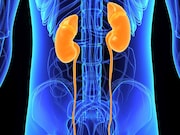Incidence increased for nonindigenous people with type 2 diabetes; greatest increase for under 50s, over 80s
MONDAY, Dec. 31, 2018 (HealthDay News) — For nonindigenous people with type 2 diabetes mellitus (T2DM) in Australia, the age-standardized incidence of end-stage kidney disease (ESKD) increased from 2002 to 2013, according to a study published online Dec. 19 in the American Journal of Kidney Diseases.
Digsu N. Koye, Ph.D., from the Baker Heart and Diabetes Institute in Melbourne, Australia, and colleagues conducted a follow-up study using a national health care services registry for patients with type 1 or type 2 diabetes. The authors examined temporal trends in the incidence of ESKD within the Australian population.
The researchers found that 9,977 of the 1,375,877 registrants between 2002 and 2013 experienced incident ESKD, representing an overall incidence of 10.0 per 10,000 person-years among people with diabetes. The age-standardized annual incidence was stable during the study period among people with type 1 diabetes. Among those with T2DM, there was an increase in incidence in nonindigenous people (annual percentage change, 2.2 percent); the greatest changes were seen for those younger than 50 and older than 80 years. In indigenous people, there was no significant change over time, although the adjusted incident rate ratio was 4.03 for indigenous versus nonindigenous people.
“Identification of ways of reducing progression to ESKD both in indigenous and nonindigenous people with T2DM is urgently needed,” the authors write. “The findings of this study also emphasize the importance of aggressive risk factor treatment, especially in those with younger-onset T2DM.”
Copyright © 2018 HealthDay. All rights reserved.








